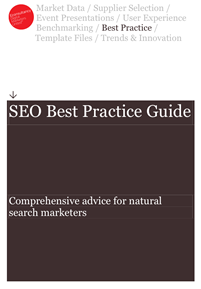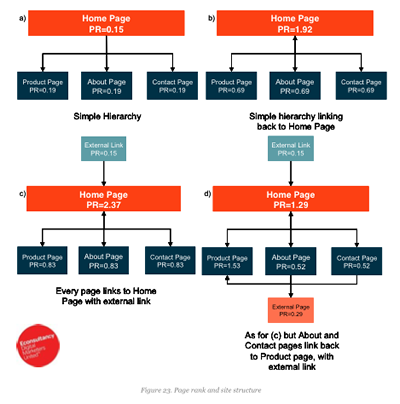 Guides about internet marketing tactics like Search Engine Optimization can be very useful tools; not only for practitioners to gain insight into what’s working and what’s not, but also for the agency/client side people working on the business side of things to understand where a particular tactic fits within an overall online marketing program.
Guides about internet marketing tactics like Search Engine Optimization can be very useful tools; not only for practitioners to gain insight into what’s working and what’s not, but also for the agency/client side people working on the business side of things to understand where a particular tactic fits within an overall online marketing program.
While there are many, many credible SEO bloggers, conference speakers and pundits talking about the virtues of the latest SEO this and that, many business leaders are keen on recommendations that come with the credibility of an established marketing publication. The updated Guide on SEO edited by Jake Hird from Econsultancy, “SEO Best Practice Guide – Comprehensive advice for natural search marketers” is a great example of such a resource.
Originally created by Dr. Dave Chaffey, this most recent version has famous SEO expert contributors ranging from Lisa Myers of Verve Search to Dave Naylor of Bronco to Will Critchlow of Distilled to Nichola Stott of theMediaFlow who I did a SEO Dojo podcast with recently on SEO and Public Relations (podcast posts on Monday).
As a living document that gets peer reviewed and edited each year, this SEO guide is “soup to nuts” as they say, covering basics like keyword research, on-page optimization and link building to more advanced SEO topics like conversion optimization and optimizing for mobile. The guide is organized by Success Factors for SEO, including: Planning & Keywords, Indexing, On-Page Factors, Link Building, Process & Conversions.
 There are also a number of Appendix items covering: SEO Copywriting, SEO Performance Audit, SEO Ranking Factors, Checklist for Links, a substantial section on Mobile SEO, RFP Template (I’m not a fan of SEO RFPs) and the inevitable SEO Glossary.
There are also a number of Appendix items covering: SEO Copywriting, SEO Performance Audit, SEO Ranking Factors, Checklist for Links, a substantial section on Mobile SEO, RFP Template (I’m not a fan of SEO RFPs) and the inevitable SEO Glossary.
Overall, this guide is a great primer for those wanting to learn more about practical Search Engine Optimization as an independent marketing channel. It would be a good resource for marketing, advertising, public relations, copywriters, webmasters, interactive marketers and web designers that want to get a good baseline of SEO knowledge.
With advice on planning, process and sourcing SEO resources, this guide is also useful for companies from both a practical and logistical perspective, that want to include SEO more formally in their marketing mix.
Personally, I’d like to see a little more about strategy and how SEO intersects with other channels, but that would be at least double the size of the current SEO Best Practice Guide which currently weighs in at 323 pages. I’ve reviewed this guide before and I continue to believe it’s a very useful resource that’s practical and actionable for agencies and in-house marketers alike.
The guide is available to Econsultancy members (Silver membership $395/yr and above), or purchase the report individually for $350. Obviously, it’s a no brainer to get the Silver membership since you get access to a range of similar reports and guides for a little more than the cost of an individual report.


